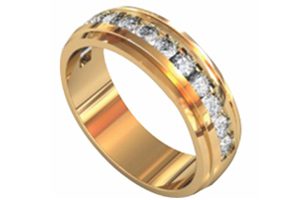What are the different types of gold in jewellery?
When you are buying gold jewellery, you frequently get to choose between different types of gold colours and gold karats options. What do all these things mean, and is there a big difference between the different gold types? Here’s a quick guide to learn about gold colours.
Gold colours
Gold jewellery is not pure gold. It is an alloy; that is; a mixture of metals. This is because gold in its purest form is malleable. Gold jewellery can be alloyed with silver, copper, zinc, palladium, and nickel to create different gold colours. The most common gold colours are yellow, white and rose.
Yellow gold

- Yellow gold jewellery is made by mixing pure gold with silver, copper, and zinc. It is the purest colour, less likely to cause allergic reactions and requires the least maintenance of all the gold colours. Yellow gold jewellery is still the most popular colour, but today gold is available in a diverse range of colours. The process of alloying pure 24 karat gold gives gold more durability but can also be used to change its colour.

white gold ladies ring
- White gold is made of gold and platinum (or palladium). White gold can also be made of gold, palladium, nickel and zinc. White gold is more durable and scratch-resistant than yellow gold. White gold is created through alloying pure gold with white metals such as palladium or silver. In addition, it is usually plated with rhodium to create a harder surface with a brighter shine. White gold has become the new favourite for most couples.
Rose gold
- Rose gold (or pink gold) is alloyed with gold, copper, and silver. When it comes to purity, rose gold is no different from yellow gold or white. Due to its copper content, rose gold is more durable than yellow or white gold.





